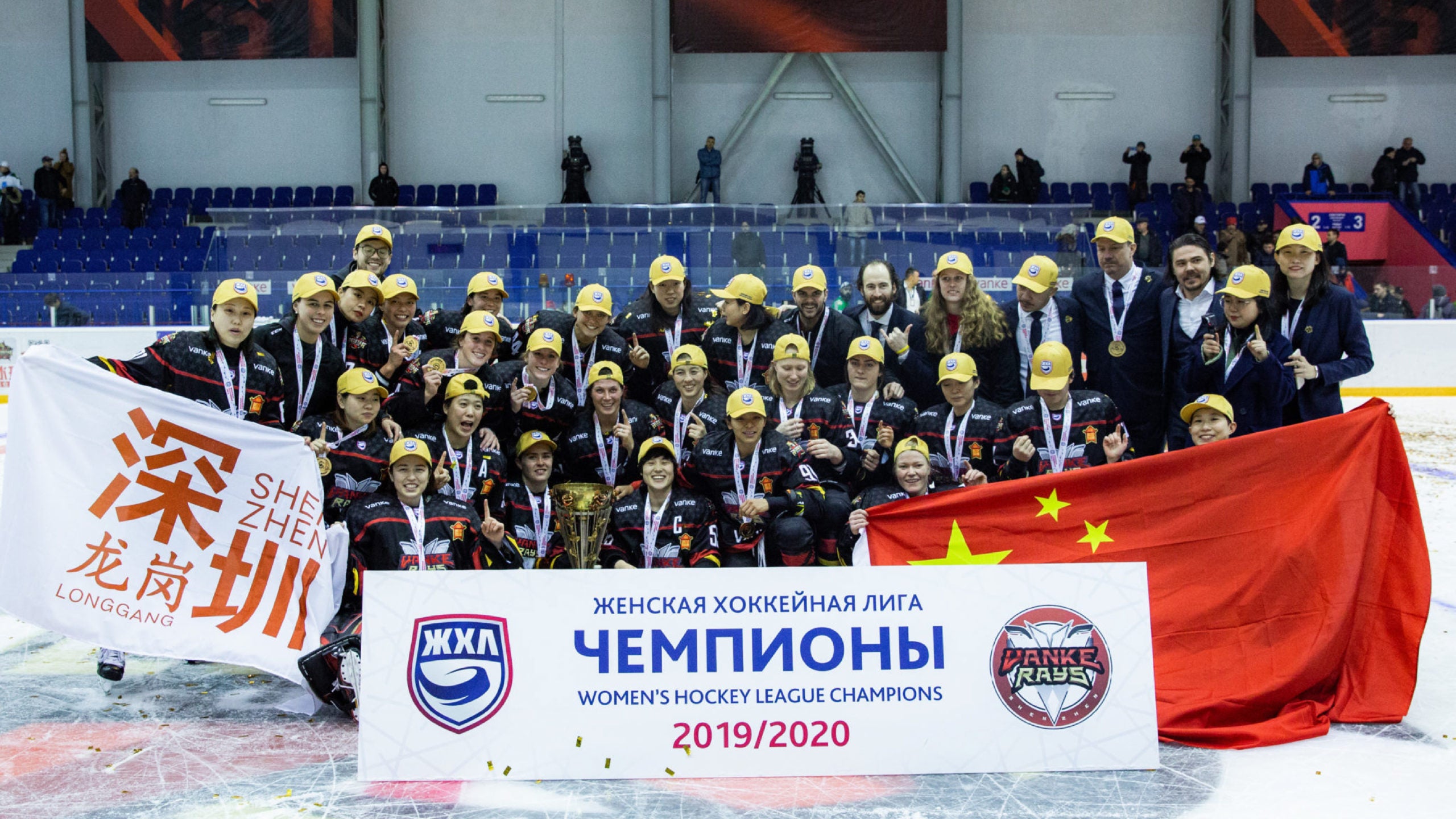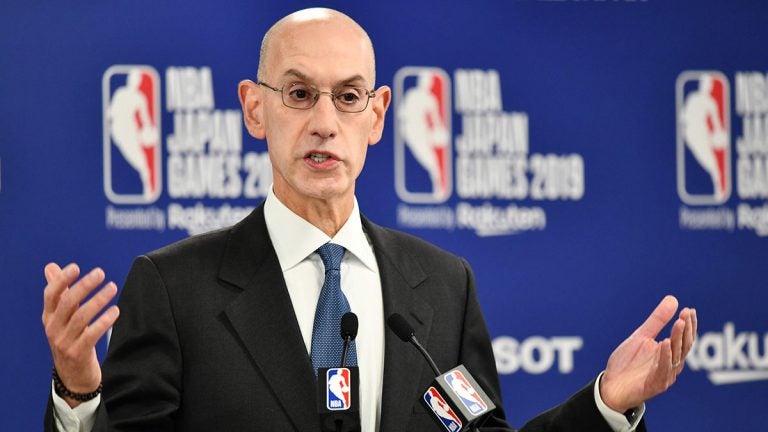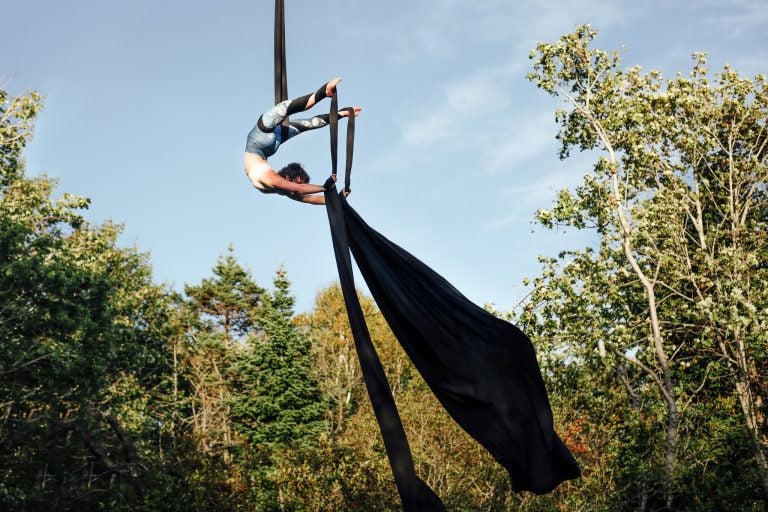Chinese women’s hockey team makes history amid COVID-19 crisis
Why this matters
The coastal city of Shenzhen, China lies more than 550 miles south of Wuhan – just an hour and 45 minutes away by plane. When the International Ice Hockey Federation (IIHF) began canceling tournaments in Asia in January due to the coronavirus outbreak, the Shenzhen KRS Vanke Rays women’s hockey team quickly determined that it was time to get out of China.
They never came back. It was an extraordinary step for the well-financed club taking part in its inaugural Russian Women’s Hockey League (WHL) season.
It began with a foreboding WeChat post. In a late January group chat on the popular Chinese social media network, a Shenzhen KRS Vanke Rays staff member posted a photo of two people in hazmat suits moving a body on a gurney in Wuhan. That was how China’s professional women’s hockey team became aware that the COVID-19 outbreak could jeopardize their successful inaugural season in the Russian Women’s Hockey League (WHL).
The team had just dispersed for the Chinese New Year holidays. Generally, Chinese-born players were visiting their families, while North American imports had flown home. Claire Liu sprang into action with a contingency plan. The 34-year-old Chinese-born general manager, who holds a master’s degree in sports business from New York University, consulted with billionaire owner Billy Ngok, head coach Brian Idalski, and other team leaders before making her move within just two days. Although the Rays were not scheduled to play again until facing SK Gorny Ukhta in St. Petersburg, Russia, on February 15, Liu rebooked everyone’s flights to head there immediately.
“We didn’t even think about canceling the season, because we wanted to finish it,” said Liu, a former competitive swimmer. “Of course, we took the players’ safety and health as a priority. We were afraid if we waited until later, the risk would increase for travel and our international flights might be limited. And we also didn’t want our players to be quarantined when we went to Russia, because that would ruin all our plans, especially the training and preparation for the playoffs. At that time, St. Petersburg had no confirmed COVID-19 cases at all.”
The Rays – based about 550 miles south of Wuhan in the coastal city of Shenzhen (population 12.5 million) – never came back to China again during the 2019-20 regular season or playoffs.
According to Liu, the additional costs for extending the Russia trip – including flights, hotels, meals, and more – would total close to $200,000. Yet the investment paid off. The Rays defeated Agidel Ufa on March 11 for the WHL championship. This marked the first time in hockey history that any Chinese club has won a pro title.
Right now, sports leagues worldwide have shut down or are playing in front of empty stadiums. Women’s sports advocates fear that the coronavirus pandemic will reduce sponsorships, resources, and audiences. The unlikely, underpublicized story of this uniquely well-funded women’s hockey team highlights a different, more optimistic narrative. It also reflects the high priority China places on winning medals at the 2022 Beijing Olympics – provided the Games occur on schedule in this unpredictable environment.
Ngok co-founded Kunlun Red Star (KRS), a professional men’s hockey team, in Beijing as part of Russia’s Kontinental Hockey League (KHL) for 2016-17. Ngok, whose companies include China Environmental Energy Holdings and Golden Brick Capital Management, added the women’s team in Shenzhen in 2017-18. The Rays are intended to help develop Chinese talent for the 2022 Olympics.
Four-time Olympian Noora Raty, who backstopped Finland to its first silver medal ever at last year’s Women’s Worlds, signed as Shenzhen’s top goalie in June 2017. The Espoo native’s salary – undisclosed but reportedly between $60,000 and $100,000 a year – is significantly higher than normal in this sport, where players often have to pay to play. Raty, 31, doubles as an ambassador who is responsible for mentoring Chinese goalies and helping to popularize hockey in China.
“I’m super-interested in seeing what happens after the Olympics,” said Raty. “Is it like all the money gates are going to close? Or will they keep building it? What I’ve tried to tell them is that you can’t buy success with money. It won’t happen overnight. I always felt these Olympics might come too soon for [the Chinese women’s hockey team]. But by 2026, they could be a really good team. It needs a lot of patience.”
In addition to Raty, this year’s Rays had nine Chinese nationals, seven Canadians, and eight Americans. The latter group included WHL scoring leader Alex Carpenter and hard-shooting defender Megan Bozek, who have combined for nine Women’s Worlds gold medals and two Olympic silver medals. The 2022 Chinese Olympic team will include a mix of Chinese nationals and “heritage players,” who are North Americans of Chinese descent.
Outside the northern Chinese city of Harbin, there is little hockey tradition – male or female – in this nation of 1.4 billion. Chinese women’s hockey had its heyday in the 1990s. The national team came fourth at the 1994 and 1997 IIHF Women’s World Championships and fourth at the 1998 Olympics – the first Winter Games to feature women’s hockey.
No nation other than the U.S. or Canada has ever won a women’s hockey gold medal. And according to the International Ice Hockey Federation (IIHF), China currently has just 808 registered female players. As the Olympic host nation, China is a long shot to nip Finland, Russia, or Switzerland for an Olympic women’s hockey bronze medal, although it is not inconceivable.
To expose Chinese players to high-level competition, the Shenzhen team first spent two seasons in the now-defunct Canadian Women’s Hockey League (CWHL). They were joined by a second Chinese club, Vanke Rays, which merged with Shenzhen after 2017-18. Despite an injection of KRS capital that enabled the five Canada-based CWHL teams to pay their players modest stipends of $2,000 to $10,000 CAD per year, the CWHL folded in 2019.
In the byzantine landscape of women’s hockey, Shenzhen’s Plan B for 2019-20 was the WHL. It’s a well-organized league under the KHL umbrella, but it offers less-seasoned competition than the CWHL did, as it includes Russian female players as young as 15.
With COVID-19 emerging, getting to St. Petersburg was a circuitous odyssey for some players. Raty resides in Minneapolis, where she operates the MEGA Goaltending school with her fiancé, Karel Popper. She described her travels: “I went from Shenzhen to Beijing to Tokyo to Denver to Minnesota. I wore a mask for the first time in my life – for travel, that is! I was home for 10 days. Then I went from Minnesota to Amsterdam to Gothenburg for a tournament with the Finnish national team. Flew to Finland for one night afterwards to see my family, and then the next morning I flew to St. Petersburg.”
On many fronts, being treated like full-fledged professionals is rare for women’s hockey players. A recent Victory Press report on the U.S.-based National Women’s Hockey League (NWHL) highlighted sub-par working conditions. NWHL players said they had been obliged to skip showers and to urinate in trash cans because of a lack of dressing rooms, to pay for their own meals, and to cover their own travel costs between cities on certain occasions, among other allegations. By contrast, the Rays have provided players with livable salaries, quality equipment, full-time coaches and trainers, and a five-story apartment residence in Shenzhen with a cafeteria and games room.
“We didn’t want our players to be away from home and suffer in Russia for two months,” said Claire Liu. “We wanted to provide them with the best situation so they could enjoy it and finish the season and perform well.”
In St. Petersburg, the Rays had a well-organized routine during their monthlong visit. They stayed at a Marriott hotel by the Neva River. For training sessions, they walked over a bridge to the Yubileyny sports complex, which hosted the men’s IIHF World Championship in 2016. Generally, the players would lift weights at 9 a.m., skate at 10 a.m., and leave the rink by 1 p.m. That left ample time to explore Peter the Great’s 317-year-old Baltic port city, from the Hermitage Museum to ballet performances to Georgian restaurants.
Despite the unusually long road trip, the rising menace of COVID-19 still felt distant for the Rays. They finished the regular season by outscoring SK Gorny Ukhta and Dynamo St. Petersburg by a combined 12-4 margin in three regulation-time wins and one overtime loss. The Rays retained second place overall behind Agidel Ufa.
Anti-Asian racism sometimes surfaced in Russia as coronavirus fears increased. “There were definitely a couple of incidents that made me roll my eyes and shake my head,” said Raty. “Like, how could people act like that? That shouldn’t happen anymore.”
Raty described how some Russian passengers refused to sit next to Chinese players on a plane but were willing to sit next to Western coaches. The Rays were supposed to stay at a Moscow-area hotel for their first-round playoff series with Tornado Dmitrov, which kicked off on February 28, but the hotel denied entry to Chinese guests.
The Rays persevered. They bunked down at a spa resort in Dmitrov, a town of 61,000 just north of Moscow, and swept their best-of-three series against Tornado Dmitrov. Raty, a five-time World Championship all-star, said Idalski set the tone as the coach.
“I think he did a really good job where he didn’t freak out about anything,” Raty said. “If your coach is freaking out, the players will start freaking out. He was like, ‘Whatever we have to face, we’ll figure it out and move on.’ So I just like how calm he stayed with all the adversity we had to face.”
Facing Agidel Ufa in the finals posed a multipronged challenge. Not only had Ufa defeated the Rays three times in four regular-season meetings, but the Rays also wouldn’t get any actual home games due to the pandemic. Instead, they would play the entire best-of-five series in the capital of the Republic of Bashkortostan, more than 700 miles east of Moscow in the Ural Mountains.
Defender Xueting Qi is a 33-year-old Harbin native who competed at the 2010 Olympics and has made a comeback after two years of working as a coach. She was happy that the Rays decided to rent the practice rink of Salavat Yulaev Ufa, the local KHL franchise, for the series.
“It’s hard to be away from home for a long time,” said Qi. “But we handled that. We took the arena and made it look like our home rink. We put up stickers in the dressing room and a Chinese flag in the rink. Even being away from home, we tried to play as if we were at home.”
Equipment manager Steph Klein took care of the meticulously staged dressing room. Of course, that didn’t entirely make up for not playing at the glistening, 18,000-capacity Shenzhen Dayun Arena. The Rays, who average close to 3,000 fans per home game, set a WHL single-game attendance record (4,100) there on January 19. It reflects the growing interest in hockey among both girls and boys in this subtropical city in the Guangdong province.
“There are 300 or 400 kids in our city who are learning to play hockey,” said Claire Liu. “We have our own youth program. Currently, we are building another rink to provide some more opportunities for kids to get on the ice.”
“I think they’ve really embraced women’s sports in China, which is really strange, because it is a very patriarchal society,” said Melanie Jue, a Chinese-Canadian skater from Richmond, British Columbia, who shares the all-time franchise lead in games (84) with defender Zhixin Liu. “For some reason, if you’re an athlete there, you kind of get a pass. That’s been kind of neat.”
The Rays may not yet rival the popularity of tennis star Li Na or volleyball legend Lang Ping, but they made headway with their three-game sweep of Agidel Ufa. They frustrated opposition stars like Russian captain Olga Sosina and Czech playmaker Alena Mills. And, objectively, not having to make the long trip from -5 Celsius (23 degrees Fahrenheit) in Ufa to +25 Celsius (77 Fahrenheit) in Shenzhen had its benefits.
“I think this championship gives people a lot of confidence,” said Claire Liu. “Also, as a club, we’ve invested a lot, and now we’ve gotten some good results. It’s good for our brand and validates the things we have done. It’s also really good for how the local government looks at us. In Shenzhen, the local government has supported us a lot.”
On the international level, though, questions remain about how this will benefit the Chinese Olympic team. Carpenter and Bozek finished 1-2 in the playoff scoring race. Apart from Zhixin Liu, who had two assists in the closing 4-2 win at Shenzhen’s adopted home rink, no Chinese-born player got a point in the finals. In Game Two, Raty was forced to make a whopping 47 saves to steal a 3-2 win.
“Everyone knows how good she is,” Idalski said of Raty. “There’s really a mental edge to her game. She’s rightfully feared for her ability to win a game by herself.”
Some heritage players who could play in Beijing stepped up.
Defender Jessica Wong shone on the top defensive pairing with Bozek. The 29-year-old Wong hails from Sydney, Nova Scotia, and once won a U18 World Championship silver medal with Canada.
Jue also chipped in two assists in the final game. It was a remarkable twist of fate for Jue, who, before joining the Rays, had not played high-level hockey since her senior year at Cornell in 2010 and had become a college coach.
The 32-year-old self-deprecatingly recalled what she first told KRS officials when they sought her advice about heritage players to approach: “‘Hey, if you’re looking for the best Chinese North American hockey players, why don’t you ask me to play? Just kidding.’ They were like, ‘Oh, you still want to play?’ I said, ‘Why not? I’ve only been retired seven years! Let’s see how it goes.’ I guess they were desperate. They said OK to me, and here we are three years later.”
The Rays won their race against time. The 2020 IIHF Women’s World Championship, scheduled for March 30 to April 10 in Nova Scotia, was canceled on March 7 due to coronavirus concerns. If the Rays had taken more than three games to defeat Ufa, it’s likely the WHL final would have been canceled, too.
However, another race against time now looms. With less than two years till Beijing, the composition of the Chinese Olympic team remains up in the air. The politics are complicated. For one thing, as Idalski noted, no head coach has been named. For nations with smaller talent pools, choosing the right coach is even more vital than for powerhouses like the U.S. and Canada.
“The Czechs have just hired a coach,” Idalski said. “Denmark re-upped my old friend [and former University of North Dakota associate head coach] Peter Elander with a contract through the Olympics. So sooner rather than later, they [the Chinese] probably need to make some decisions here about what direction they’re going.”
As an Olympic development vehicle, the Rays must also strike a tricky balance between trying to repeat as champions in 2021 and giving more ice time to Chinese-born players who could suit up in Beijing. Idalski said he was able to achieve the latter goal in 2019-20 by putting them out later in games when the Rays had a commanding lead, but, of course, that opportunity cannot always be guaranteed.
“I think that we can be doing a better job, if I’m being completely honest with you,” Jue said. “I think we rely too heavily on our North American talent, which is fair. We bring them over, they want to play, and they’re obviously good. But I don’t think we do a good enough job of long-term thinking. The first couple of games, yeah, we might not win, or at least it’ll be close. But we need to give those Chinese players more reps. We’ve got to give them more opportunity, and we have to put them in situations where they’re going to succeed.”
“I know [the Chinese players] really looked up to Noora, to Alex, to Jessica, and myself,” Bozek said. “Being able to help them and knowing that we could potentially compete against them at the Olympics, any or all of us on our respective teams, it’s crazy to think about. But I’m anxious to see how they pick their team and what happens with that. They do have quite a bit of talent to choose from.”
For heritage players like Jue, receiving Chinese passports and satisfying the IIHF’s eligibility requirements to play in the Olympics also will be necessary. Female players who have not previously represented another country in IIHF competition must get an approved, dated international transfer card authorizing them to represent China at least eight months (240 days) before the Olympics begin.
Another quirky wrinkle is that a whole separate roster of Chinese-born players was originally scheduled to represent China in this year’s Division I Group B World Championship. Those players, many of whom played for the Rays in 2018-19, had been training together in the U.S. and underwent a 14-day quarantine after returning to Beijing in mid-March. The Division I Group B tournament was set for Katowice, Poland, from March 28 to April 3 to but was canceled on March 2.
According to Xinhua, at the end of the Beijing quarantine, two players tested positive for COVID-19 with mild symptoms. Ultimately, it is unclear how talent from this team will be integrated with eligible Rays players for the 2022 Olympics.
COVID-19 infections are on the rise in Russia, which could potentially delay the start of the 2020-21 WHL season in September. And with the Tokyo Summer Olympics postponed until 2021, no one can say for certain that the Olympic torch will be lit in Beijing on February 4, 2022.
Currently, Qi is in Shenzhen. Along with 12 other Chinese-born players, she is already on a strength and conditioning program for 2020-21, adhering to the hockey mantra of “control the things you can control.” In a world dominated by pandemic fears and ongoing protests, Qi remains hopeful about making her nation proud in Beijing.
“It’s tough to say what will happen,” Qi said. “Now it’s very hard for us. I hope we can play the best we can. Just give everything.”
Monthly Issue
COVID-19 & Sport
COVID-19 is the rival no one in sport could game plan for. As many live events remain at a standstill and the world keeps adapting, how is sport resetting upon its staggered returns?





